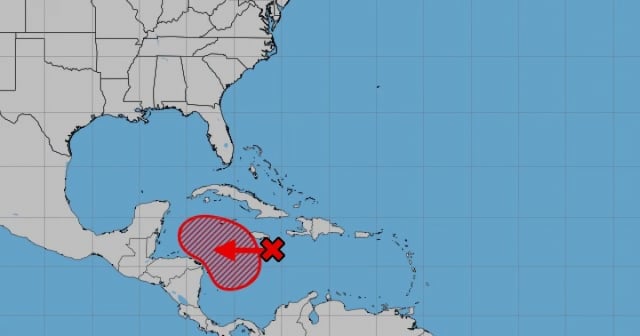The Cuban meteorologist José Rubiera warned on Tuesday about the high probability of a tropical cyclone forming in the western Caribbean this week and advised that the western region of Cuba should remain vigilant for a possible approach of the system.
Rubiera announced on YouTube that although November is traditionally a relatively quiet month in the hurricane season, the current conditions in the region are conducive to the development of a cyclonic system.
According to weather analyses and models, an active tropical wave south of Jamaica in the western Caribbean is showing signs of organization that could develop into a tropical cyclone within the next 72 hours.
It was reported that the GFS, European, and German models—three of the most accurate in weather forecasting—agree that this system could intensify as it moves westward, approaching areas in northeastern Nicaragua or the Gulf of Honduras.
The factors contributing to this potential cyclonic formation include the high heat content in the surface waters of the western Caribbean, abundant humidity, and the low intensity of winds in the upper atmosphere, all of which favor the strengthening of these types of systems.
As it progresses, the weather phenomenon may pause its movement for two or three days, causing prolonged effects in the region, and then resume its movement towards the northwest, bringing it closer to the Yucatán Peninsula and possibly to the western part of Cuba.
In light of this situation, residents of Central America, the Yucatan Peninsula, and western Cuba are advised to stay vigilant regarding weather reports.
Authorities and emergency services are on alert to respond to potential impacts, and reports on the behavior of this cyclonic system are expected to be updated daily.
This Tuesday, the National Hurricane Center (NHC) of the United States reported an increased likelihood of a tropical depression forming in the Caribbean Sea before the end of the week.
According to the latest bulletin, there are disorganized rains and thunderstorms over the central Caribbean Sea, which are associated with a broad area of low pressure.
The chances of that area of low pressure developing into a tropical cyclone in the next two to three days are 60%, as the system slowly moves westward toward the western Caribbean Sea.
In the span of seven days, the chances increase to 90%. Less than 24 hours ago, the figure was 80%.
Filed under:
